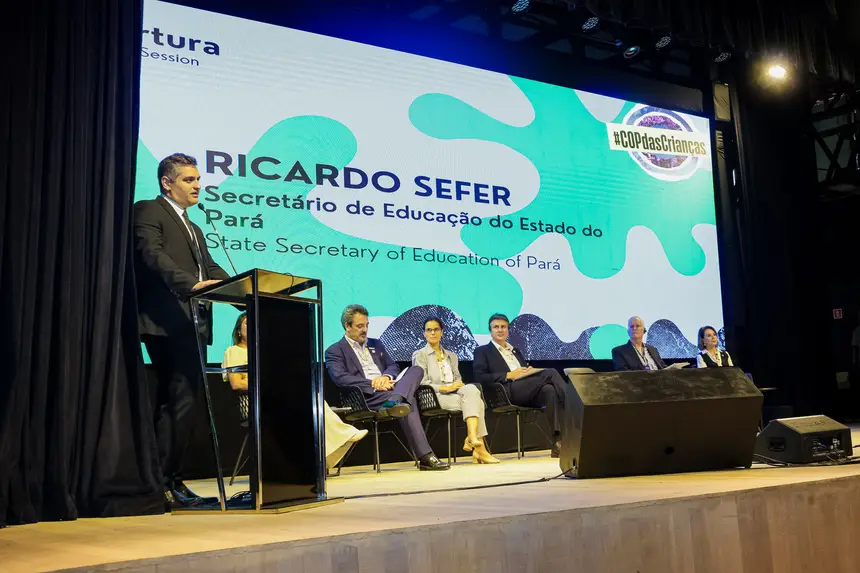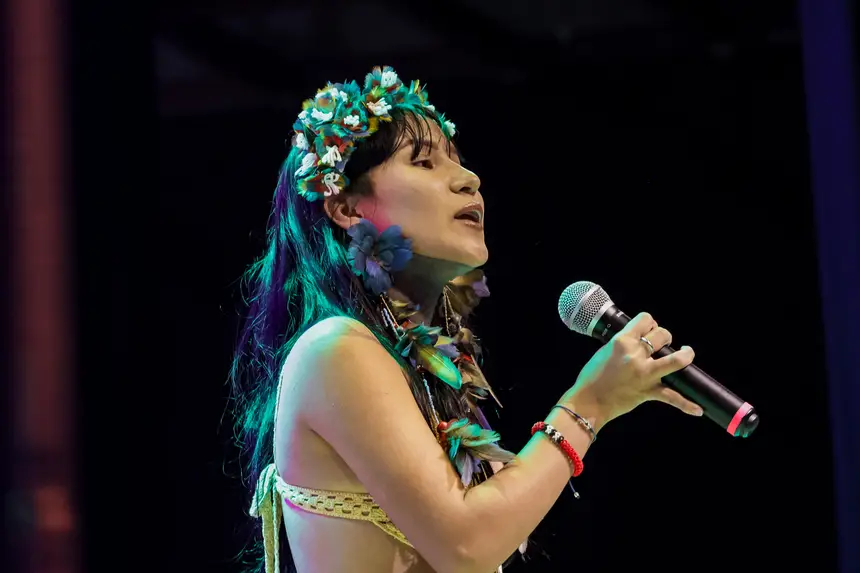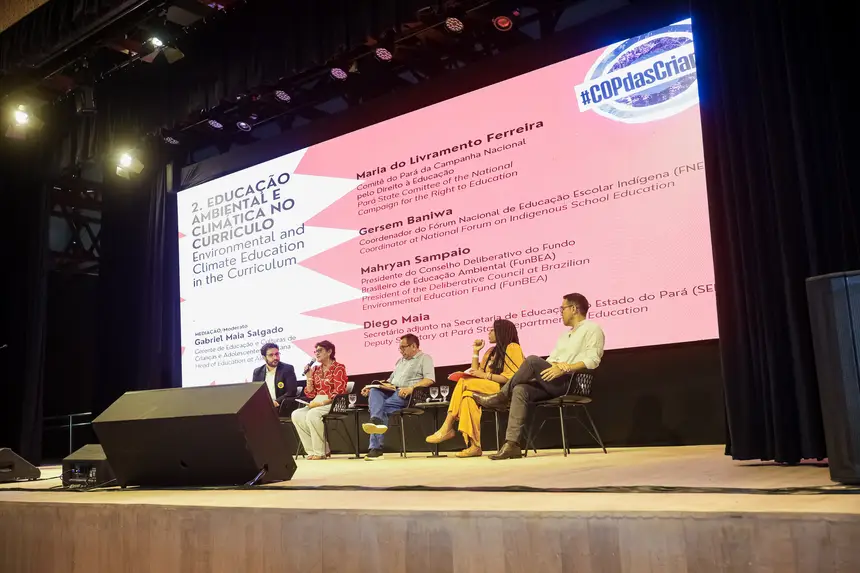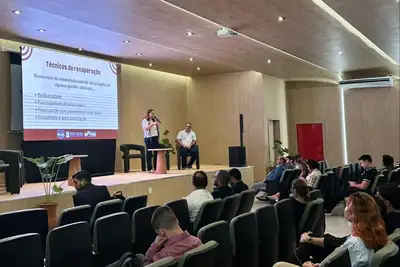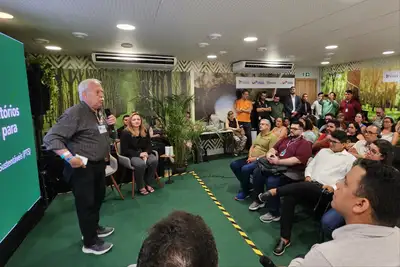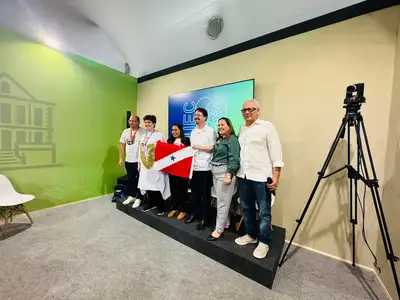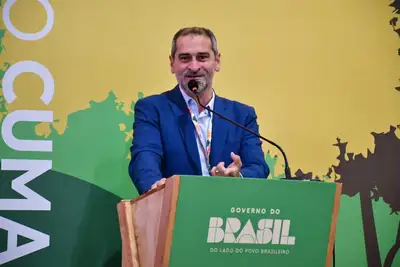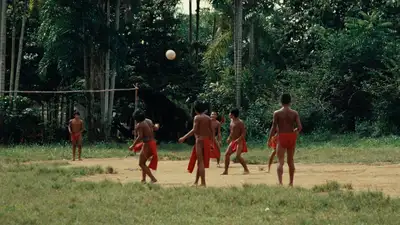Seduc holds event on climate education at COP30 focusing on children and adolescents
Partnership with Instituto Alana marked Education Day with discussions on curriculum, infrastructure, and youth participation in climate decisions
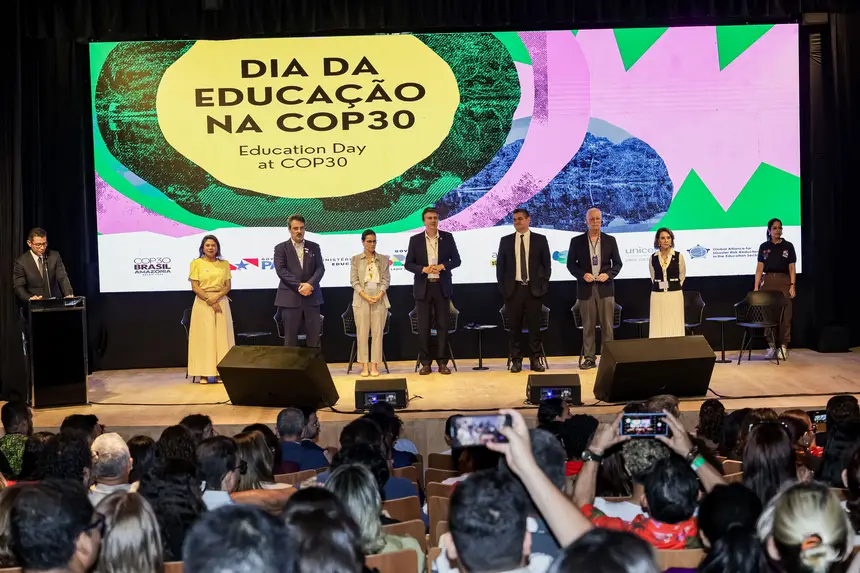
During the programming of the 30th United Nations Conference on Climate Change (COP30) in Belém, the State Department of Education (Seduc), in partnership with Instituto Alana, held an event on Wednesday (12) in commemoration of Education Day, focusing on the inclusion of climate issues in educational policies.
The meeting brought together authorities, specialists, students, children, and adolescents with the aim of strengthening the role of education in addressing the climate crisis and mobilizing national and international institutions to build commitments aimed at integrating environmental and climate education into education systems.
The State Secretary of Education, Ricardo Sefer, welcomed the participants and highlighted the relevance of education as a tool for personal and collective transformation.

“Everyone is very welcome. It is a great honor. I would like to give a very special thanks to the Caixa Cultural team for the space, with yet another asset that Belém gains as a legacy of COP30. (...) I was bitten by the education bug to do everything, really everything, to always offer the best for those who are the true stars of any public education policy, which are our students, especially children, youth, and adults. We have many adults who are students in the public network. May we always continue to be students,” declared the head of Seduc.
The opening panel included the presence of the Minister of Education, Camilo Santana; the president of Instituto Alana, Ana Lúcia Villela; the representative of Unicef, Joaquin Gonzalez-Aleman; and the director of Unesco, Christopher Castle.
Minister Camilo Santana emphasized the urgency of bringing environmental issues into schools. “We will only have a planet and a country aware of environmental problems if people have knowledge. And this happens within the school, with informed and guided teachers, and with the construction of a pedagogical model that includes all environmental themes transversally. Environmental consequences are already a reality; they are no longer a future issue,” he emphasized.
Project transforms schoolyards with nature
During the event, the project “Resilient and Naturalized Schoolyards” was presented, developed by the State School Jarbas Passarinho in partnership with Instituto Alana. The proposal seeks to rethink the open spaces of the school, making them more integrated with nature and the well-being of students.

According to Simone Moura, Visual Arts teacher and creator of the initiative, the project is an important step to bring the school routine closer to climate reality.
“Pará is advancing in this process of integrating environmental education into the curriculum. With full-time school, we can develop projects that are part of the daily life of the student, allowing them to take this learning home, to their family, and to the community,” she stated.

Student Giovana Santos, 16 years old, a 2nd-year high school student, highlighted the importance of active listening and student participation in the project. “The project started with something we know how to do best, which is to observe and listen. From that, we took walks around the school, observing the forgotten spaces and creating amazing ideas. This project is the result of the voices of all the students who participated,” she reported.
Discussions on curriculum and infrastructure
The program included thematic panels addressing everything from global negotiations for local transformations in defense of the right to education to topics such as:
- Environmental and climate education in the curriculum
- Resilient and naturalized school infrastructure
- Management for school resilience
- Continuity of education in the face of climate change
COP for Children
The action is part of the “COP for Children,” an initiative of Instituto Alana that seeks to increase the participation of children and adolescents in climate decisions. The project arises in response to the historical absence of this audience in negotiation spaces, despite being the most affected by the effects of the climate crisis.




